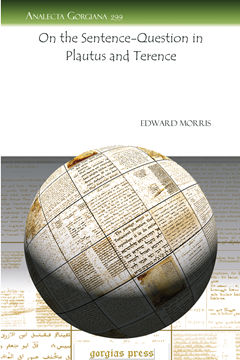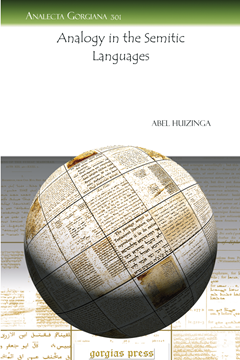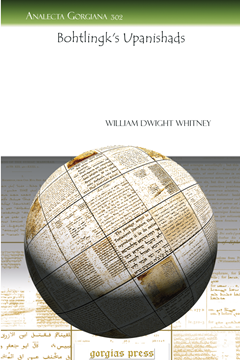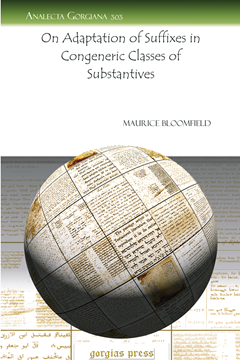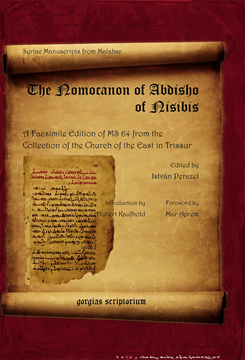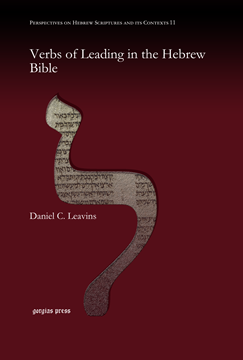On the Sentence-Question in Plautus and Terence
Series: Analecta Gorgiana 299
ISBN: 978-1-60724-561-2
Edward Parmalee Morris uses his intimate knowledge of the syntax of Plautus to address the conventions for understanding interrogative constructions in Latin sentences.
$57.00 (USD)
On the Articular Infinitive in Polybius
Series: Analecta Gorgiana 300
ISBN: 978-1-60724-562-9
Hewlett explores the specific use of the Ancient Greek articular infinitive in Polybius.
$42.00 (USD)
Analogy in the Semitic Languages
Series: Analecta Gorgiana 301
ISBN: 978-1-60724-563-6
Abel H. Huizinga was a noted scholar of Hebrew, and in this, his dissertation for John's Hopkins University, he discusses the mechanics of analogy in semitic languages with a focus on Hebrew.
$42.00 (USD)
Bohtlingk's Upanishads
Series: Analecta Gorgiana 302
ISBN: 978-1-60724-564-3
William Dwight Whitney examines Bahtlingk's edition of the two longest of the ancient or genuine Hindu Upanishads, the Chandogya and the Brhad-Aranyaka.
$37.00 (USD)
On Adaptation of Suffixes in Congeneric Classes of Substantives
Series: Analecta Gorgiana 303
ISBN: 978-1-60724-565-0
Maurice Bloomfield was a great authority on Sanskrit literature and comparative linguistics, applies the principles of linguistics to rationalize certain irregular forms in a variety of languages.
$36.00 (USD)
Servius on the Tropes and Figures of Vergil
Series: Analecta Gorgiana 304
ISBN: 978-1-60724-566-7
John Leverett Moore, in this doctoral thesis for Johns Hopkins University, examines the methods by which Servius organized his commentary on Virgil.
$44.00 (USD)
Verbals in -tos in Sophocles
Series: Analecta Gorgiana 305
ISBN: 978-1-60724-567-4
Charles Bishop, whose life work revolved around the study of -teos adjectives in Greek and cognate forms in other Indo-European languages, examines the specific role of such adjectives in the plays of Sophocles.
$43.00 (USD)
The Nomocanon of Abdisho of Nisibis
A Facsimile Edition of MS 64 from the Collection of the Church of the East in Trissur
Series: Syriac Manuscripts from Malabar 1
ISBN: 978-1-59333-968-5
This book is one of the most important sources for the canon law of the East-Syrian Church. In Canon I of the council held in the year 1318, this collection was proclaimed the authoritative canon law and has since retained its status as the binding legal collection of the East Syrian Church. This second edition reproduces the original manuscript in color.
$366.00 (USD)
Conceptual Metaphors in Poetic Texts
Proceedings of the Metaphor Research Group of the European Association of Biblical Studies in Lincoln 2009
Edited by Antje Labahn
ISBN: 978-1-61719-029-2
The Hebrew Bible discusses difficult and often ineffable subjects such as life, God, heaven and earth and frequently relies upon metaphor to do so. This volume of collected essays offers a new methodological approach to understanding metaphors as conceptualizing aspects of life. Articles provide close analysis of metaphors in various biblical books such as Psalms, Job, Judges, Chronicles, Isaiah, and Hosea.
$165.00 (USD)
Verbs of Leading in the Hebrew Bible
ISBN: 978-1-61143-925-0
Authors of the Hebrew Bible had at least 17 different verbs which they could use to represent “leading” or “guiding” in the Hebrew Bible. What are these “verbs of leading” and how are they related to one another? Why did an author choose the particular “leading” verb he chose in a particular context? Every occurrence of a verb of leading in the Hebrew Bible is examined through the lens of semantic-role theory by assigning roles to each of the phrases typically used with the verbs. This study resolves some problem passages and supplements traditional lexicographical research.
$193.00 (USD)
